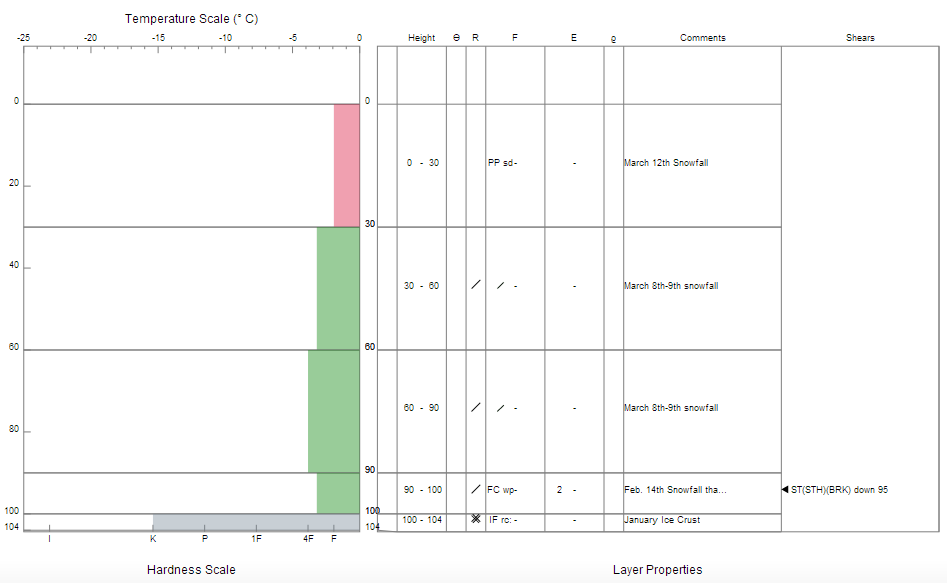

Local Avalanche IncidentsMarch 15th, 2014 - "Tele Bowl", Chilkat RangeThe CAIC report on this incident can be found Here.
Weather Summary: Feb. 13th-15th brought 18-30" of new snow to the mountains in three distinct storm layers (some upside-down). Winds blew from the south at times, and north at other times. Cold and clear weather with north winds returned for the rest of February and into March. March 8th-9th brought 3 feet of new low-density snow, turning warm and heavy at the end. Winds started out northerly, and then turned southerly. South winds on March 9th-13th raised snow levels to around 1500ft. Around 12" of new wet snow fell above that level. Alpine temperatures were quite steady and just below freezing for the five days prior to the accident. Saturday, March 15th was cloudy, with the springtime sun barely shining through the high clouds enough to warm the day slightly and provide some contrast for skiers.
Snowpack Summary: Observations gathered 13 miles to the northwest on the Takhin Ridge on Friday, March 14th showed the recent storm layers in the top 90cm of snowpack to be well bonded to each other, and also to the weaker, older facet layer below. Compression and Extended Column tests (testing down to the ice crust but not below it) were carried out at 2000ft MSL, showing no failures (CTN and ECTNR). A Shovel Shear test did cause a Q3 shear failure 95cm down, within the rounding facet layer (STH Q3). Overall, stability in some areas was excellent, with little sluffing of the recent snow on steep slopes, and no danger signs present.
 Snow profile from Takhin Ridge (13 miles NW of accident site) from March 14th. N aspect @ 2000ft, 35-degree slope. Click to enlarge Recent natural avalanche activity from the last storm on March 12th was limited to a few isolated pockets of deep slab, mostly D2, that came down from steep, unsupported slopes, or mid path after debris had come down over them. The advisory published by the AAIC for Haines on the day of the incident rated the danger as Considerable on south aspects if the sun were to come out, and MODERATE elsewhere. The discussion specifically mentioned the threat of deep slabs, saying, Details of the Incident: A full report on this incident was made by the company involved, it can be seen at the CAIC webpage link at the top of this page.
State Troopers' report:
More details can be found below: |